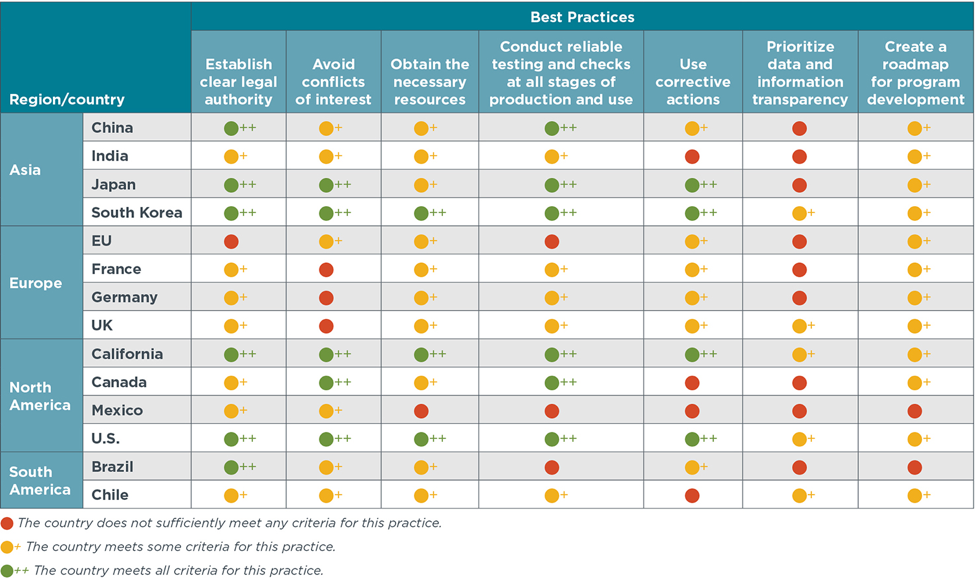Press release
How well are governments enforcing vehicle emissions standards? Worldwide, the answer is: Not as well as they could be
New survey-based study shows notable disparities in compliance activities, accomplishments among most important global vehicle markets
Washington DC—A new study cataloging and evaluating the efforts made by governments in the world’s most important vehicle markets to ensure that cars and trucks comply in practice with pollution and fuel-efficiency regulations finds significant differences in level of effort, and ample room for improvement even in the best cases.
The study, released today by the International Council on Clean Transportation, reports the results of a comprehensive survey of government agencies tasked with monitoring and enforcing compliance with regulations that establish limits for pollutant emissions in vehicle exhaust, as well as fuel-efficiency or carbon emissions standards. The study authors supplemented survey data with personal interviews and a review of the limited published research data.
“Vehicle standards ultimately depend on having effective systems in place to make sure that vehicles comply in practice,” said Rachel Muncrief, program director at the ICCT and one of the paper’s coauthors. “This study confirms that there’s room for improvement everywhere on that score.”
The paper is the first broadly comprehensive attempt to assess not rules and official pollution targets but subsequent compliance and enforcement practices in these areas of environmental policy. The ICCT determined to undertake such a broad and intensive study in the aftermath of the Dieselgate scandal, as the extent of manufacturers’ efforts to evade or sidestep emissions regulations became increasingly clear.
The governments/markets surveyed were China, Japan, India, and South Korea in Asia; the European Union as a single entity, as well as France, Germany, and the United Kingdom as separate individual cases; Canada, Mexico, and the United States in North America, as well as the State of California because it maintains separate pollutant regulations and a separate compliance and enforcement system; and Brazil and Chile in South America.
The paper evaluates government compliance and enforcement programs against seven criteria, ranging from the existence of clear legal authority to the adequacy of funding and other resources to the degree to which vehicle performance data are made available for wider public scrutiny (figure). It rates/scores each market using a standardized method.
In general, South Korea, Japan, and the United States have the most comprehensive and effective programs. But even in those cases, the study found that enforcement activities and relevant data are not transparent enough to establish a truly solid foundation for public oversight.
“A number of regions have recently revised or are in the process of revising various elements of their C&E practices,” said Zifei Yang, the study’s lead author. “But even regions that have relatively comprehensive C&E program need to establish a vision and roadmap for their C&E programs that takes into account future regulations and advances in technology.”
The European Union, and the three Member States surveyed separately, scored relatively poorly against all criteria. Most significant, the study found that compliance and enforcement efforts in those markets were hampered by an absence of clear legal authority, the presence of opportunities for conflicts of interest to arise, a lack data transparency, and insufficiently reliable testing at all stages of vehicle use.
In early 2016, the European Commission proposed a new motor vehicle type-approval framework that will, if adopted, constitute an important step toward an effective system of monitoring and practically controlling pollutant emissions throughout a vehicle’s lifetime-in-use. Both the European Parliament and the Council of the European Union have presented amendments to the Commission proposal. Negotiations on the draft are ongoing between these three EU bodies, with a final version expected in late 2017.
Global baseline assessment of compliance and enforcement programs for vehicle emissions and energy efficiency (.pdf)

